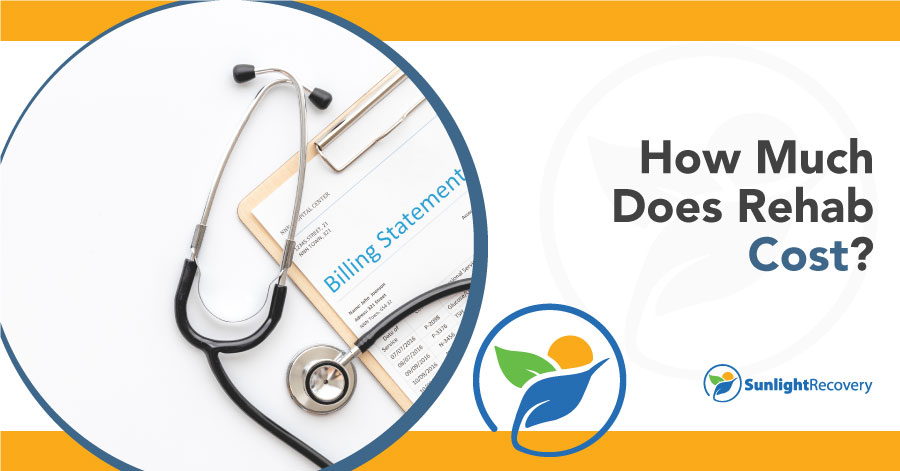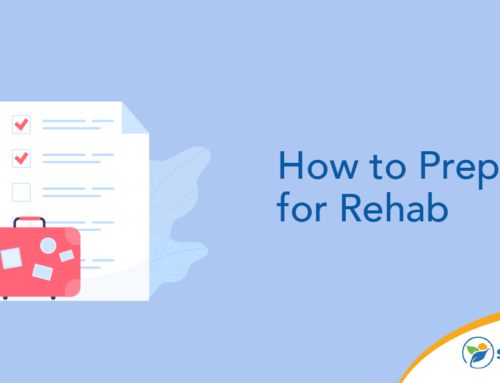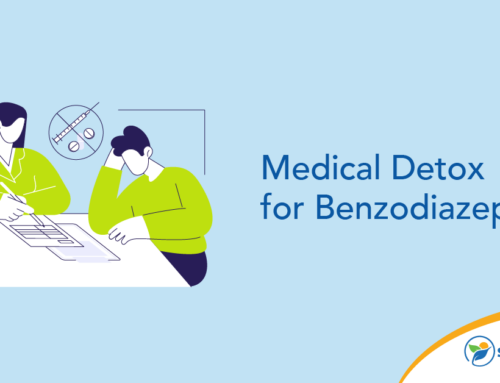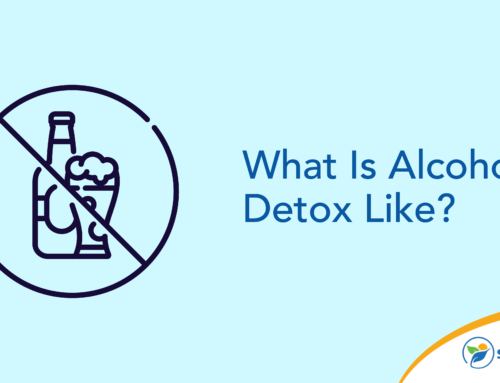So, how much does alcohol and drug rehab cost? This guide will help you understand what you can expect when you’re ready to start recovering from your addiction.
How Much Does Rehab Cost: Medical Detoxification
The medical model of detoxification sees drug and alcohol withdrawal as a medical condition requiring professional treatment. During detox, doctors and nurses are on hand to monitor the patient and provide ongoing care. Detox programs may also provide medications to reduce the severity of a patient’s withdrawal symptoms. For people with substance abuse problems, detoxification is the first step to recovery.
Detox usually costs anywhere from $250 to $1,000 per day for a 30-day program. You may pay more if the facility is located in an area with a high cost of living. Facilities offering additional services tend to cost more than detox-only facilities.
Detox Insurance Coverage
Because detox is designed for people with drug and alcohol dependencies, it’s covered by most insurance plans. The level of coverage available depends on the terms of the plan. Some insurers cover 100% of the cost, while others charge co-pays or coinsurance. The type of plan you have also affects the cost of medical detox. For example, a PPO plan may cover a higher percentage of the cost than an HMO plan.
How Much Does Rehab Cost: Outpatient Rehab
Outpatient rehab typically includes counseling, group therapy and educational programs. Patients receive services for several hours each week, giving them the support they need to recover from addiction. Outpatient rehab is ideal for people with mild addictions and people who aren’t ready to commit to a residential program.
How much is rehab on an outpatient basis? It really depends on the length of the program and the services included. Some programs offer medication management, so patients may need to pay extra for their medications. It also depends on whether the program provides aftercare, intensive outpatient care or day programs.
Aftercare usually begins once a patient leaves a residential rehab program. Patients don’t meet as often as they do during IOP and day programs, so aftercare costs the least. IOP programs are designed to help participants meet their recovery goals. Patients receive more attention at the beginning of the program and slowly reduce the amount of time spent in treatment. Day programs typically meet for several hours every day, making this the most expensive type of outpatient care.
Three months of outpatient care costs anywhere from $1,400 to $10,000. The cost of intensive outpatient care starts out about twice as high — at least $3,000 for a 30-day program. Intensive outpatient programs may cost as much as $10,000.
Outpatient Rehab Insurance Coverage
Traditional health insurance plans provide some level of coverage for outpatient treatment. The amount covered depends on the type of plan you have. Plans with high monthly premiums tend to cover a higher percentage of the cost than high-deductible plans with low premiums. Your plan may also cover a higher percentage of your costs if you use an in-network treatment provider.
How Much Does Rehab Cost: Residential Rehab
Residential rehab costs the most. The higher cost reflects the number of services provided in a residential setting. Residents spend most of their days receiving treatment, meaning staff members must be on hand 24 hours per day. This type of rehab center also offers more treatment options than outpatient facilities.
So, how much does rehab cost on a residential basis? Anywhere from $5,000 to $80,000.
Residential Rehab Insurance Coverage
Traditional insurance plans provide some level of coverage for residential rehab. However, they may set a limit on how many days you can stay in a rehab center. You may also need to obtain prior approval before checking into a residential rehab facility.
Cost of Rehab With Insurance
Alcohol and drug rehabilitation costs depend on many factors, including program length and location. Treatment costs also vary based on the severity of each patient’s addiction. Someone in the early stages of an addiction may be able to recover with outpatient treatment. People with long-term addictions typically require residential treatment to help them recover.
The type of program also affects the overall cost. Outpatient rehab usually costs less than residential treatment, mostly because residential rehabs offer 24/7 care. However, it can be difficult to estimate the total costs of outpatient care.
Health Insurance in the United States
If you live in the United States, getting the health care you need can be frustrating. Even if you have insurance, you still have to pay some costs out of your own pocket. Many plans also have high monthly premiums and restrictive provider networks. This is especially frustrating when you need life-saving treatment for a drug or alcohol addiction.
Health Care Reform
Two laws made it a little easier for people to seek addiction treatment and other mental health services. The Mental Health Parity and Addiction Equity Act (MHPAEA) changed the way health plans cover mental health services. Under this law, large group health plans must treat mental health services the same way they treat medical/surgical benefits.
The Affordable Care Act also improved access to mental health services. According to the law, all traditional health plans must cover 10 essential benefits. Mental health services and substance abuse treatment are included in this requirement. As a result, more people now have access to drug and alcohol rehab, counseling and other necessary services.
The Current Landscape
Despite these health reforms, the cost of care continues to be a barrier for patients in need of addiction treatment. In fact, an inability to pay is the most common reason people don’t get treatment when they need it. Health insurance companies also make it difficult to access care by requiring preapprovals or demanding subscribers use in-network providers.
For people on Medicare or Medicaid, it can be even more difficult to get addiction treatment. Original Medicare is broken into two parts, one for inpatient care and one for outpatient care. Each part has different coverage guidelines, making it difficult to answer the important question: How much is rehab? People with Medicare Part C may have better luck accessing treatment, as Part C plans are sold by private insurers.
Medicaid covers basic addiction treatment, but it may not cover all the services you need. It can also be difficult to qualify for Medicaid due to the low income and asset limits. Even patients with excellent private insurance plans sometimes wonder how they’ll pay for the care they need.
Paying for Rehab Without Insurance
Free Treatment Programs
Surprisingly, many organizations offer free rehab programs for people who need them. This makes addiction treatment more accessible, but the downside is that most programs have waiting lists. If you’re in crisis, you may not be able to wait for the next spot to open up.
Cash Payments
Most treatment centers have self-pay rates available for patients without insurance. These prices are usually lower than what a facility would charge an insurance company for the same care. Some rehab centers also have sliding scale fees. A sliding scale means the cost depends on your financial situation. To qualify, you may need to provide proof of your income and expenses.
Medical Loans
Taking out a loan isn’t ideal, but it can save your life if you need immediate addiction treatment. Some lenders offer loans specifically for medical and dental procedures, making treatment more accessible. One of the benefits of an installment loan is that you have a fixed monthly payment. Interest rates are also lower on most installment loans than on credit cards.
Credit Cards and Personal Loans
If you don’t qualify for a medical loan, you may qualify for a credit card or personal loan. A credit card is best for paying the amount remaining after your insurance pays its share of the bill. Depending on your credit history, you may qualify for a limit high enough to cover your treatment. If your credit card limit isn’t high enough, a personal loan is another option. Check with your bank or credit union to find out how much you can borrow.
Crowdfunding
Not everyone has good enough credit to qualify for a loan or credit card. If this describes your situation, don’t give up hope. Crowdfunding is another potential funding option. With crowdfunding, you use an online platform to raise funds from friends and family members. Asking multiple people for small donations is much easier than asking one person to loan you a large sum of money. Therefore, you may have better luck with crowdfunding than you would if you asked someone for a loan.
Why Does Rehab Cost So Much?
It’s true that drug and alcohol rehab can be expensive. Once you realize what goes into running a rehab program, however, you’ll understand why the costs are so high. One reason is that rehab facilities must be licensed. The licensing fees vary by state, but they may be hundreds or even thousands of dollars. Owners may also have to pay rent or monthly mortgage payments.
Once the center is up and running, it takes a lot of money to operate it. Employee compensation, utilities and janitorial services are just some of the expenses incurred. Because rehab centers must have licensed treatment staff, compensation is usually one of the biggest expenses. To retain high-quality employees, many rehab centers also provide health insurance and other benefits. This increases the total cost of operation.
Standard Rehab
The cost of rehab depends on whether you attend a standard program or a luxury rehab facility. Standard rehab programs offer many services, all of which increase the cost of care. These services include counseling, support groups, family therapy, educational programs and medical detoxification. To deliver their services, rehab centers must hire staff, provide ongoing training and purchase educational materials.
The cost of operating a residential rehab center is even higher. These centers operate 24 hours per day, 7 days per week. That means staff members must be available all hours of the day and night, increasing compensation costs.
With staff working 24 hours per day, a residential center’s utility costs are also higher. Employees may spend more time working on computers or use more energy on lights and heating/cooling.
Residential rehab centers also have to provide room and board for their residents. This means hiring food service workers and cleaning staff. Residential facilities must also pay for bedroom furnishings, bed linens and other items. All these costs add up, which is why residential rehab is the most expensive option.
Luxury Rehab
Luxury rehab centers offer all the same services as standard treatment programs. However, they often scale up these services to make residents more comfortable. A luxury facility may offer private bedrooms with high-quality linens and antique furnishings, for example. Some luxury rehab centers have libraries, private gardens and other well-appointed common areas. Maintaining such high-end accommodations is more expensive than running a standard rehab program.
Good nutrition is an important aspect of addiction recovery. That’s why some luxury rehab centers hire experienced chefs to prepare gourmet meals. Other facilities have dietitians on hand to develop custom nutritional plans for each resident. Hiring additional staff members and purchasing higher-quality ingredients adds to the cost of staying at a luxury rehab center.
Many luxury rehab centers also take a holistic approach to treatment. This means they focus on treating the mind and body as well as the addiction. High-end rehab centers may offer acupuncture, massage, equine therapy or art therapy to put patients at ease. Offering these additional services requires extra staff members and supplies, increasing the cost of care.
Get Comprehensive Addiction Treatment in Florida
Paying for treatment today can help you avoid some of the most serious consequences of addiction later in life. Contact Sunlight Recovery to find out more about our life-saving treatment options. It’s possible to live a life free of cravings, sleepless nights and constant worry.







